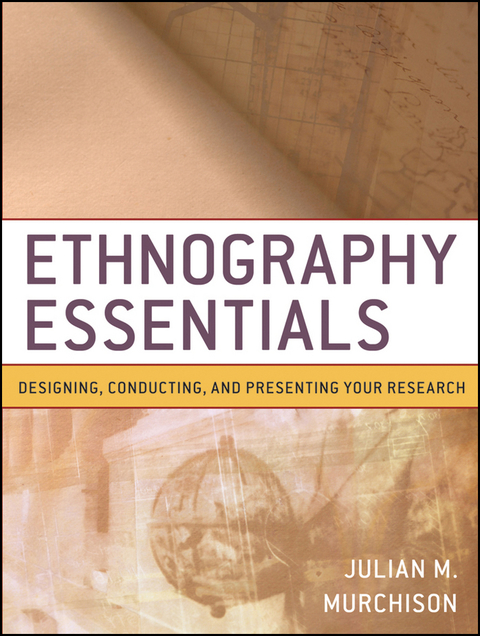Description
Efnisyfirlit
- Cover
- Title
- Copyright
- PREFACE
- THE AUTHORS
- Dedication
- PART 1: THE WHY AND WHAT OF ETHNOGRAPHY
- 1 WHAT IS ETHNOGRAPHY?
- Ethnography: The Engaged, Firsthand Study of Society and Culture in Action
- A Brief History
- How Ethnography Has Changed: Doing Contemporary Ethnography
- Ethnography as Firsthand Research
- Ethnographer as Research Instrument
- Collaboration as Research Model: Ethnographer as Student
- 2 CHOOSING AN ETHNOGRAPHIC TOPIC
- Where to Look for Possible Topics
- Ethnographic Topics: Studying Places, People, or Events
- The Benefits of a Relatively Specific Focus
- Thinking About the Nonobvious as Discoverable
- Cultural Knowledge and Behavior in Action as Research Objects
- Practical Concerns
- Considering Ethics from the Start: Your Obligations to Potential Informants
- Topics You Might Want to Avoid
- 3 RESEARCH DESIGN
- Turning an Idea or Topic into a Research Question
- Linking Questions to Methods
- Key Methods to Consider for the Ethnographic Project
- What Is Practical or Feasible? Time, Availability, and Ethics
- 4 WRITING A PROPOSAL
- Identifying and Reviewing Appropriate Literature
- Statement of the Problem
- A Clear Research Plan
- Identifying Your Project’s Larger Relevance
- Human Subjects Review and Approval
- PART 2: ETHNOGRAPHY IN THE FIELD: COLLECTING DATA
- 5 A GUIDE TO COLLECTING DATA AND TAKING NOTES
- The Fleeting Nature of Ethnographic Data
- “Should I Write it Down Immediately?”
- The Importance of Detail in the Ethnographic Record
- Writing Notes Versus Using Recorders
- The Prospects of Transcription
- What Is Important and What Is Superfluous:“What Do I Need to Write Down?”
- The Ethics of Collecting Information
- 6 PARTICIPANT-OBSERVATION
- The Apparent Paradox: Participation and Observation
- Balancing Participation and Observation
- The Importance of Time
- Depending on Informants as Teachers and Guides
- Getting Started
- Regular Versus Extraordinary Behavior and Conversations
- 7 INTERVIEWS
- Starting with Informal Interviews and Conversations
- Informal Conversation as an Avenue to “Real” Culture
- A Good Interviewer Is a Good Listener
- How to Record Interview Data
- Using an Interview Schedule
- How to Start an Interview
- Good Versus Bad Interview Questions
- When to Conduct Formal Interviews
- 8 ANALYZING ALONG THE WAY
- Identifying Key Themes and Questions: Paying Attention to Your Data
- How to Organize Your Notes
- What Have You Learned?
- What Do You Still Need to Do?
- Has the Research Question Changed?
- Tweaking the Research Design
- Getting Feedback from Your Informants
- Writing at the Midway Point
- 9 ETHNOGRAPHIC MAPS
- Space and Movement as Key Components of Culture
- The Importance of Space, Shape, and Distance
- Large- and Small-Scale Geographic Maps
- Mapping Interior Spaces
- Cognitive or Conceptual Maps
- Representing Movement and Behavior on a Map
- 10 TABLES AND CHARTS
- Ethnographic Tables
- Interpersonal Relationships as a Manifestation of Culture
- Kinship as an Organizing Principle
- Other Organizational Charts
- 11 ARCHIVES AND SECONDARY DATA
- Cultural Artifacts as Sources of Information
- Making Ethnographic Use of Archives
- Contemporary Cultural Artifacts
- Evaluating and Analyzing Cultural Artifacts
- Analytical Sources Versus Popular or Primary Sources
- PART 3: ANALYZING AND WRITING
- 12 SORTING AND CODING DATA
- Writing from Your Research Data
- Identifying Key Themes and Questions
- Identifying Important Research Moments and Experiences
- Coding and Sorting the Ethnographic Record
- Dealing with Apparent Contradictions: The Messiness of Ethnographic Data
- 13 ANSWERING QUESTIONS AND BUILDING MODELS
- Fitting the Pieces Together
- Moving from Data to Theory: The Inductive Process
- Remembering the Big Picture and the Big Questions
- Infusing Theory in Ethnography
- 14 CHOOSING THE APPROPRIATE PRESENTATION STYLE
- Common Ethnographic Conventions
- The Importance of Ethnographic Detail
- Matching Style to Audience, Subject, and Analysis
- A Formal to Informal Continuum of Style
- 15 PUTTING THE WHOLE ETHNOGRAPHY TOGETHER
- The Hourglass Shape as a Model
- Alternative Models for Organizing an Ethnography
- Incorporating Relevant Literature
- Incorporating Maps, Charts, and Photographs
- Demonstrating the Project’s Relevance
- Evaluating and Revising Ethnography
- Sharing the Ethnography
- Incorporating Responses and Critiques
- GLOSSARY
- REFERENCES
- INDEX
- END USER LICENSE AGREEMENT






Reviews
There are no reviews yet.